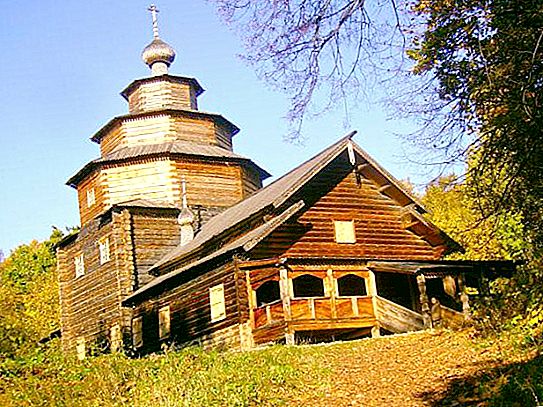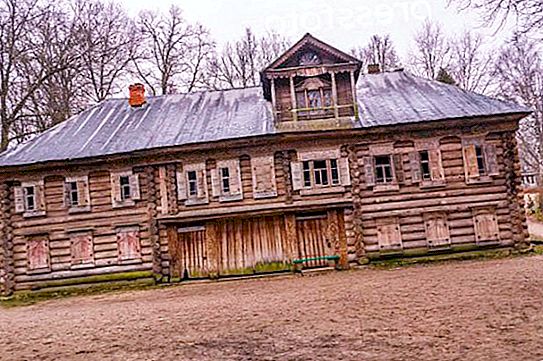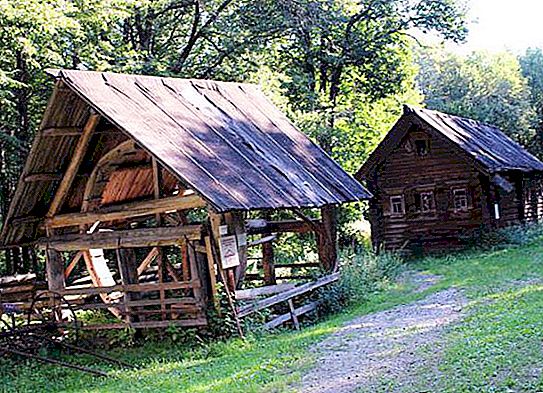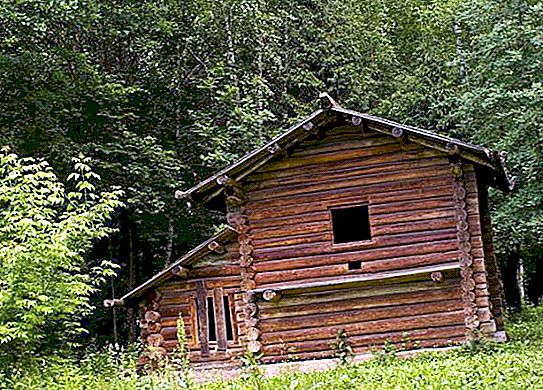The Museum of Architecture and Life of the Nizhny Novgorod Volga Peoples is located on the territory of the ethnographic zone of the Shchelokovsky Park. The museum has 15 exhibits of wooden architecture dating back to the 18-19th centuries.
History
The Museum of Architecture and Life of the Nizhny Novgorod Volga Peoples appeared by decision of the Council of Ministers of the USSR. The first project was developed in 1959, but funding was not received for implementation. The museum began to take real shape in the 1960s. The authorities of the city of Gorky allocated about 38 hectares for building and exposition on the territory of the regional nature monument Shchelokovsky farm, it happened in 1969.
The museum of architecture and life of the peoples of the Nizhny Novgorod Volga was planned to be opened in stages, as exhibits arrive and the area is developed. The first excursions took place in 1973. The main architect, author and mastermind of the exposition was Yu. G. Samoilov.
Complex opening
It was planned that the entire territory of the complex will consist of five zones:
- Northwest Volga.
- Southwestern part of the region.
- Northern Volga region.
- The middle part of the territory.
- South suburbs.
In the early summer of 1973, the museum received its first visitors. The initial exposition consisted of six buildings assembled in the Volga regions. According to the plan, there should have been five territories with characteristic houses of wooden architecture, but the whole project of Samoilov was not implemented. Over the next years, the exposition was supplemented by nine wooden structures, which completed the filling of only one part of the entire grandiose project. One of the first historical objects was the hut of Pavlova (village of Rakovo), the house was restored and assembled on the site of a permanent exhibition.
How to find the Museum of Architecture and Life of the Nizhny Novgorod Volga Peoples? The address of the cultural object: the city of Nizhny Novgorod, Gorbatovskaya street, building number 41.
Current state
The Museum of Architecture and Life of the Nizhny Novgorod Volga Peoples became the basis for the creation of a new institution - the Architectural and Ethnographic Museum-Reserve "Shchelokovsky Farm". The merger took place in 2014. Now the museum houses 15 wooden buildings dating from the 17-19 centuries. The regions from which the samples of wooden architecture were transported were Gorodetsky, Kstovsky, Semenovsky and others.
All buildings are collected in one place and represent a village street, after which the traveler sets off in the 19th century, studying the life and life of the Volga peasants. According to media reports, the Museum of Architecture and Life of the Volga Urban Peoples is in a deplorable state.
Over the past ten years, restoration work has not been carried out here, new exhibits have not been imported, and those that are are gradually deteriorating. Some exhibits are irretrievably lost. The authorities do not finance the work, which threatens with the complete destruction of the Russian original heritage. The director of the museum has repeatedly contacted the relevant structures, but there are no results. Formally, the work is underway, but it takes place in the offices, and rarities disappear without proper care.
Exposition
For a modern person, a trip to the Shchelokovsky farm will be an exciting excursion into their own history, it is represented by the Museum of Architecture and Life of the Nizhny Novgorod Volga. Photos of exhibits demonstrate the beauty and comfort of wooden buildings. The carving of windows and skates has long been the subject of close study of ethnographers, historians, and artists. You can see firsthand all 15 buildings on your own, having come here on an excursion.
The most significant and largest buildings are:
- Pokrovskaya church (built in 1672), it was brought from the Gorodetsky district.
- Ovin in two floors (late 19th century), moved from the village of Shishki.
- Barns divided into pieces.
- Grandiose water mill (19th century).
- Column mill (19th century).
- A forty-meter well log house with a step wheel (19th century), from which water was collected, moving inside the wheel.
Almost all the museum buildings are cut down with an ax and assembled without the help of nails. Inside the once-residential huts, objects of peasant life, work equipment were collected, many of them are decorated with carvings and unpretentious painting.
Tours
The complex offers guided tours, interactive programs for children and adults, environmental festivals, folk ethnographic holidays. Experienced guides will guide the tourist through the times and eras, introduce them to the living conditions of the peasants, and tell in detail about each building and its features. Most of the information is served in a sightseeing tour.
Ethnographic features of each region of the Volga region are considered in several thematic excursions; also every national holiday (Maslenitsa, seeing off winter, etc.) is marked by a festival with folk festivals. For inquisitive minds, a reconstruction club has been created. On the territory of the complex feature films have been shot several times, a route has also been laid in these places.









